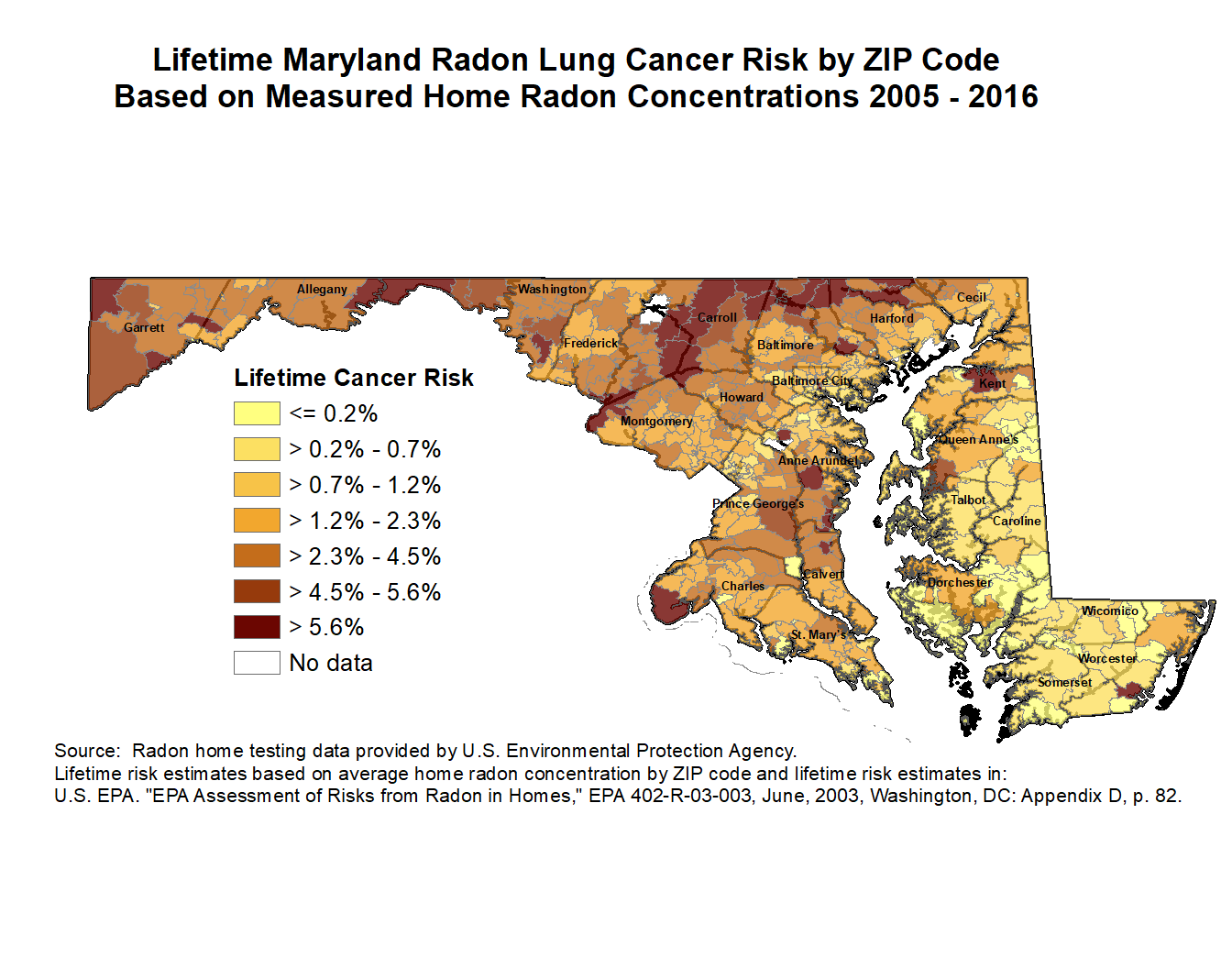Radon is the number one cause of lung cancer in non-smokers. For children, radon and second-hand smoke are the biggest risks for developing lung cancer later in life. Unless you test with a radon test kit, you can't tell whether your home has radon, because radon is a gas that has no smell, no color, and can't be seen.
Radon in Maryland
The map below shows radon levels measured in homes by ZIP code in Maryland from 2005-2016. The U.S. Environmental Protection Agency (EPA) recommends testing all homes for radon, and fixing homes if their levels are higher than 4 picocuries per liter (pCi/L).
Click the below map to access an interactive map of Maryland Radon data

Should You Care about Radon?
If you don't know your home's radon level, you should think about getting a radon test. After smoking, radon is the most important preventable cause of lung cancer in the United States and in Maryland. The map below, based on the radon test data from 2005 - 2016, shows how much radon could increase the lifetime risk of lung cancer if it were not tested and abated in homes.


